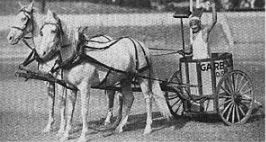Glottiphyllum does look like a likely candidate, but I still haven't found a picture of one with leaves like mine. maybe it's a hybrid or something?
anyway, here's some more;

I couldn't not buy this. Yes, that says "penis plant". Amusing name aside I really like this one, beautiful sculptural shape, and I particularly the spine arrangement. I'm not a cactus fan, but had to have this one.


Haworthia nigra "nana"

Aloe descoingsii, the smallest of the aloe species.


Aloe boweia, a rare minature aloe

Fenestraria rhopalophylla aurantiaca. One of my favourite non-lithops. Offsets prolifically and I haven't managed to kill any of them yet. Flowers are daisy-like and golden yellow.

Tavarorbea "Red Leopard", a bigeneric hybrid of Tavaresia and Orbea, whatever that might mean. Another favourite of mine, another one that reproduces madly and seems to be completely Phil-proof. Flowers are absolutely amazing, but hasn't produced any this year.

Mixed planting of Crassula and Tavarorbea

Various Lithops species. Challenge: how many plants are in this dish?

At the back is Opuntia microdasys, also known as prickly pear, one of only two cacti I've got (and i wish I didn't, it's a bloody awful thing and I've got so much I don't know what to do with it all). In front of that are two Euphorbia species, E forex on the left and E enopla on the right. At the front are tavarorbea and three Haworthia species.


Yorkshire pudding tins make good planters

I've got more Lithops species than anything else, this one is probably L aucampiae

Pleiospilos nelii varieagata

Euphorbia forex. Looks quite nice when young, then gets progressively uglier. and the spines turn from pink and rubbery to dull brown hard as nails and razor sharp.

A sempervivium, possibly flaming heart. another one that won't stop reproducing.

A faucaria, F lupina I think. Bit of mealy bug infestation, which fortunately only affects this and the opuntia.

Another haworthia. Don't know which species but it grows like a weed.\

Another O microdasys. Those little spines are bastards.

I think this is a Haworthia. Whatever it is it's another member of the long flower spike club.






 Moderator
Moderator






























